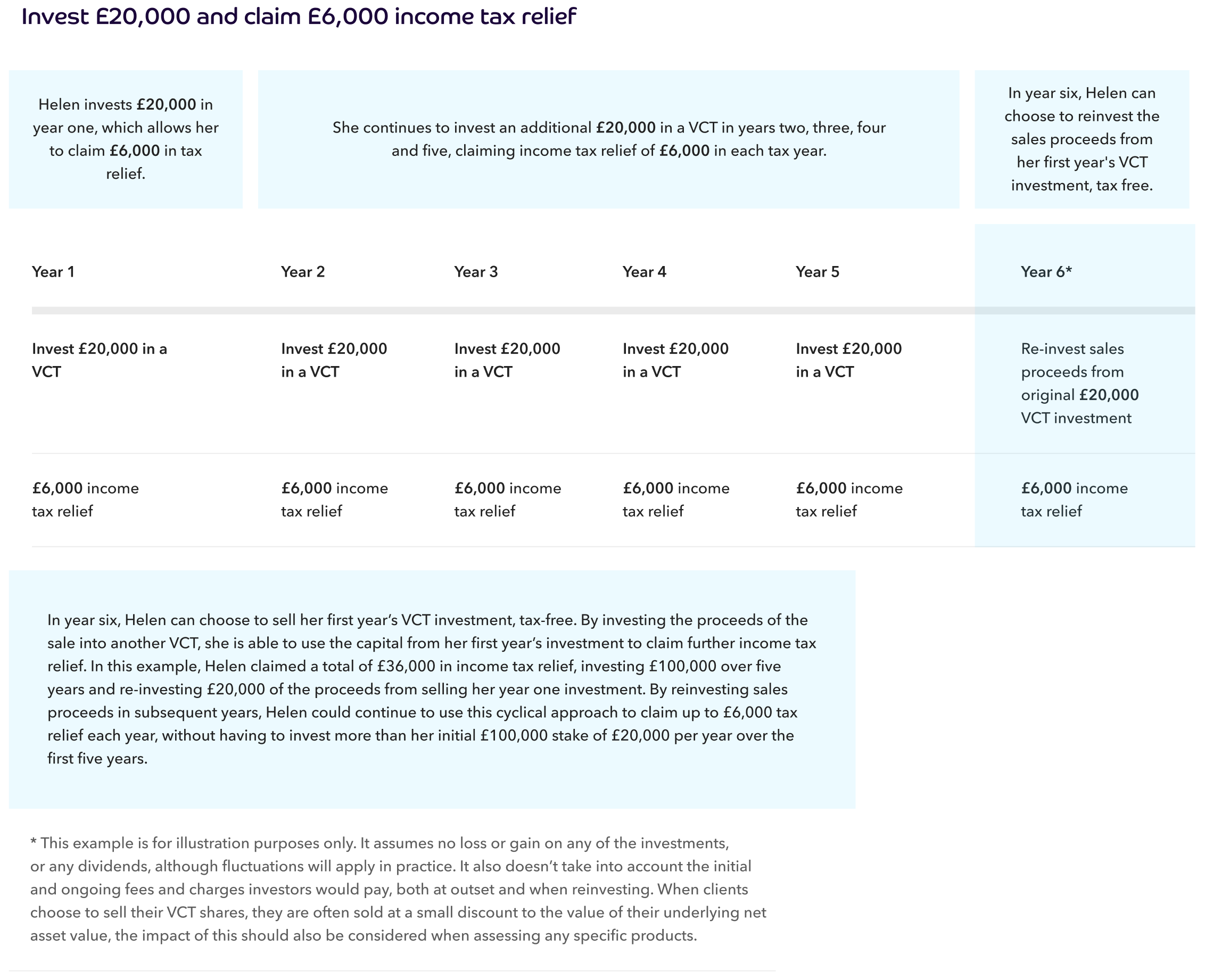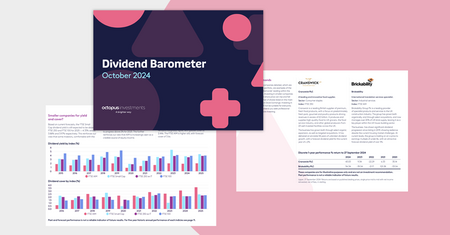Planning for landlords looking for a tax-efficient income stream
Investing in bricks and mortar has become less beneficial since major changes to buy-to-let rules in 2017. With the new rules, it’s now even more important for landlords to consider the tax implications of their property investments.
This tax-planning scenario explains how landlords could use a Venture Capital Trust (VCT) to provide a tax-efficient income stream.
Build appropriate strategies for your clients
This scenario might be useful for clients who:
- are thinking about retirement
- are looking to invest property income tax efficiently
- want to offset income tax due on rental income
Things to keep in mind
- Nothing in this scenario should be viewed as advice.
- Any suitability decisions should be based on a client’s objectives and needs, as well as their attitude and capacity for risk.
- You should consider the value, eligibility and timings of tax reliefs and liabilities.
- You should consider the impact of relevant product charges (including initial and ongoing) like administration fees and annual management charges.
Scenario
Daniel and Helen need a tax-efficient way to invest additional income
Daniel and Helen have been married for 30 years, and both plan on retiring in ten years’ time. Daniel pays higher rate tax and has a good pension. Helen, on the other hand, invested in property to help fund her retirement.
Helen earns £30,000 of rental income (after costs) from her properties and has other income up to her personal allowance. She expects to pay £6,000 income tax this year.
Both Daniel and Helen want to enjoy a tax-efficient income during their retirement. But Helen, in particular, doesn’t feel ready to sell her properties and be left with a big capital gains tax bill.
Helen’s financial adviser suggests investing in a VCT
Helen talks to her financial adviser, who makes an assessment based on:
- her risk profile
- her investment time horizon: more than five years
- her attitude towards investing in smaller companies
Based on those factors, Helen’s adviser suggests investing £20,000 of her annual rental income in a VCT each year for five years and putting the remaining £10,000 in an individual savings account (ISA).
The upfront income tax relief Helen makes from her VCT investment (£6,000) would eliminate the annual income tax she has to pay on her rental income.
After five years, Helen could sell her first VCT investment, then reinvest any sales proceeds in another VCT. She could use the additional income tax relief to reduce her year six income tax bill.
Similarly, Helen could sell and reinvest her year two VCT investment in another VCT in year seven, giving her additional income tax relief. She could then continue this approach in years eight, nine, ten and so on.
Risks
Risks to remember when investing in a VCT
- VCTs aren’t suitable for everyone. They’re high risk and should be considered as long-term investments. The value of an investment, and any income from it, can fall or rise. Investors may not get back the full amount they invest.
- Tax treatment depends on individual circumstances and tax rules can change in the future. Tax reliefs also depend on the VCT maintaining its qualifying status. Tax relief is available on investments of up to £200,000 per year.
- VCT shares could fall or rise in value more than other shares listed on the main market of the London Stock Exchange. They may also be harder to sell.
VCT overview
An overview of VCTs
VCTs were first introduced in 1995 and they’ve grown in popularity since. They’re a good fit for investors who:
- already have personal pensions and Individual Savings Accounts (ISAs)
- are comfortable with higher risk investments
VCTs have a different risk profile to pensions and ISAs and shouldn’t be compared on tax reliefs alone. A VCT isn’t likely to be suitable for investors who:
- need guaranteed income
- can’t tolerate loss
- want to keep immediate access to their money
How it works
Investing £20,000 to claim £6,000 income tax relief
Here’s an example that shows how Helen can claim income tax relief from each VCT investment she makes across several consecutive tax years. We’ve used six years as an example but she could use this method to keep claiming income tax relief indefinitely.

Things to remember about this example
- Please note that when selling shares in a VCT, it is not possible to claim tax relief on new shares bought in the same VCT within six months of the sale. You should consider the impact of this when assessing any specific products.
- Before investing in a VCT, investors should read the product prospectus and Key Information Document (KID)
Our VCTs
Interested in VCTs?
We’re the largest provider of VCTs in the market, offering
three types of investments that can provide attractive tax reliefs.
Octopus AIM VCTs
closed
Two VCTs featuring established portfolios of around 80 AIM-listed companies with growth potential.
Octopus Apollo VCT
closed
A portfolio of around 45 established smaller companies which targets commercialised businesses looking to scale.
Octopus Titan VCT
closed
The UK’s largest VCT invests in a portfolio of over 140 early-stage companies with the potential for high growth.
About Octopus
We’re a financial services provider with a difference. Our main goal is to help people plan for their financial future, so we’ve built market-leading positions in tax-efficient investment, smaller company financing, renewable energy and healthcare.
Related VCT resources

Venture Capital Trusts Explained
Learn how VCTs function, the types of early-stage companies they invest in, and the tax benefits and risks involved.

How to claim VCT tax relief
Learn how to claim up to 30% income tax relief on Venture Capital Trust (VCT) investments and enhance your understanding to support your clients’ investment decisions.

VCT FAQ’s
Our easy-to-read guide answers common questions about Venture Capital Trusts (VCTs), designed to help you understand VCTs better and assist your clients with confidence.




